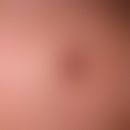Synonym(s)
DefinitionThis section has been translated automatically.
s.a. Mahonia, common.
Originally native to North America, now also established in Europe, evergreen bushy shrub species of the mahonia genus, which belongs to the barberry family. Grows to a height of 1.8 m (Berberidaceae). The leathery leaves, up to 30 centimeters long, are imparipinnate. The flowers (March to June) are yellow. From August, spherical, reddish-brown edible berries are formed.
Spectrum of actionThis section has been translated automatically.
You might also be interested in
Field of application/useThis section has been translated automatically.
In a prospective, non-randomized study, a cream containing 10% mahonia extract was applied to patients with atopic eczema with clear success (level of incidence: LOE-B). In the same indication, a combination cream (consisting of: mahonia extracts, pansy herb(Violae herba cum flore) and pennywort herb(Centellae asiaticae herba) did not show any superiority over the vehicle.
Furthermore, there are numerous reports (without evidence) of success with psoriasis vulgaris. Satisfactory personal experiences are available for "mild" seborrhoeic eczema in adults .
DosageThis section has been translated automatically.
Apply a thin layer 2-3 times/day to the affected areas of skin and massage in gently.
Undesirable effectsThis section has been translated automatically.
Standard concentrationThis section has been translated automatically.
Trade namesThis section has been translated automatically.
Various Externa (e.g. Rubisan® cream and ointment) contain Mahonia mother tincture in different applications and concentrations.
LiteratureThis section has been translated automatically.
- Donsky H et al (2007) Mahonia aquifolium extract for the treatment of adult patients with atopic dermatitis. Am J Ther 14: 442-446
- Reuter J et al (2010) Which plant for which skin disease? Part 1: Atopic dermatitis, psoriasis, acne, condyloma, and herpes simplex. JDDG 10: 788-796
- Wenigmann M. (2017) Phytotherapy medicinal drugs, phytopharmaceuticals, application. Urban & Fischer, pp. 152-153




